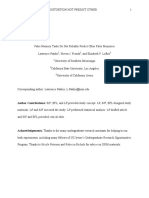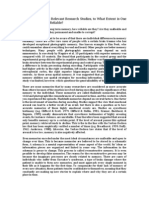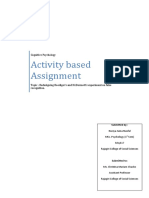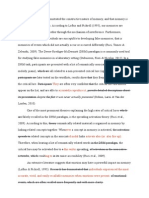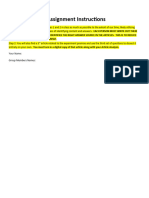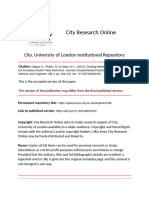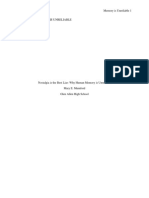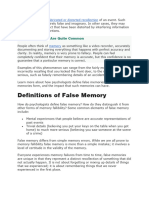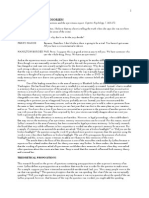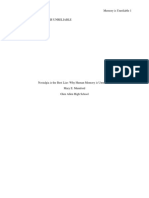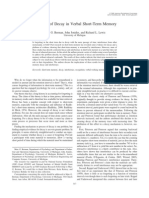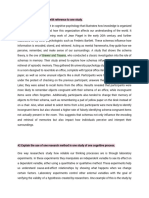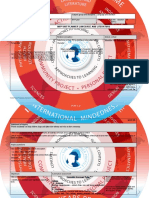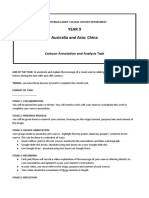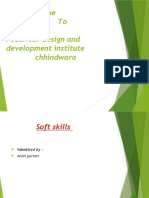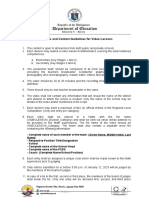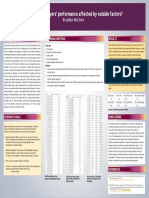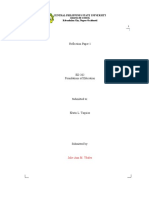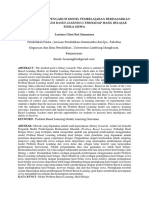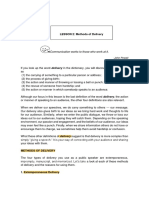0% found this document useful (0 votes)
4 views9 pagesIntroduction Section
The document discusses the phenomenon of false memory, particularly focusing on the 'Lost in the Mall' study by Loftus and Pickrell (1995), which demonstrated that individuals can be led to believe in fabricated childhood events. It reviews various studies, including the Deese-Roediger-McDermott (DRM) paradigm, which systematically investigates how false memories are created and the factors influencing their formation, such as age and cognitive processing. The current research aims to replicate and extend previous findings to better understand the mechanisms behind false memory creation, specifically examining the impact of deeper cognitive processing.
Uploaded by
PatohCopyright
© © All Rights Reserved
We take content rights seriously. If you suspect this is your content, claim it here.
Available Formats
Download as DOCX, PDF, TXT or read online on Scribd
0% found this document useful (0 votes)
4 views9 pagesIntroduction Section
The document discusses the phenomenon of false memory, particularly focusing on the 'Lost in the Mall' study by Loftus and Pickrell (1995), which demonstrated that individuals can be led to believe in fabricated childhood events. It reviews various studies, including the Deese-Roediger-McDermott (DRM) paradigm, which systematically investigates how false memories are created and the factors influencing their formation, such as age and cognitive processing. The current research aims to replicate and extend previous findings to better understand the mechanisms behind false memory creation, specifically examining the impact of deeper cognitive processing.
Uploaded by
PatohCopyright
© © All Rights Reserved
We take content rights seriously. If you suspect this is your content, claim it here.
Available Formats
Download as DOCX, PDF, TXT or read online on Scribd
/ 9







